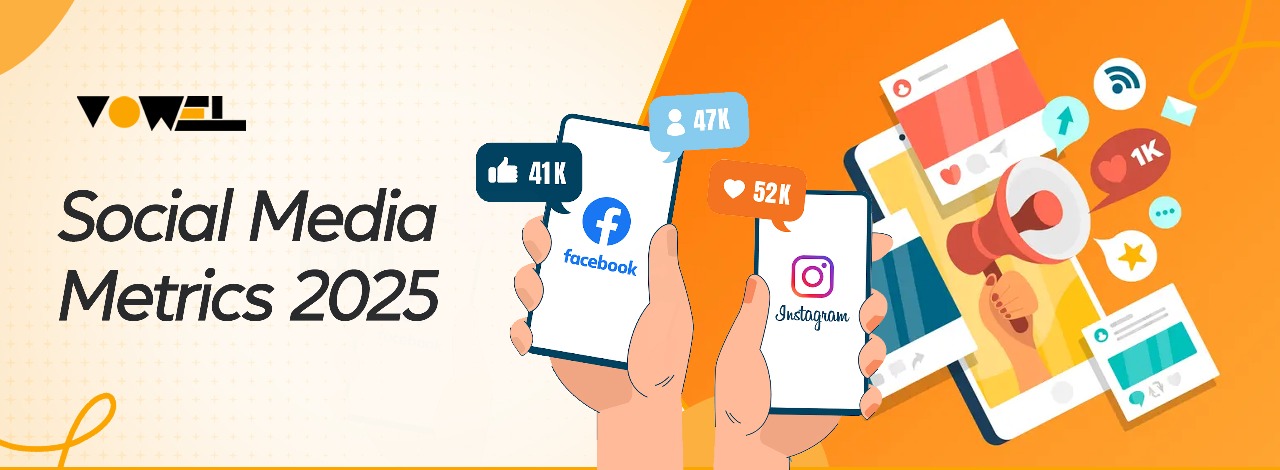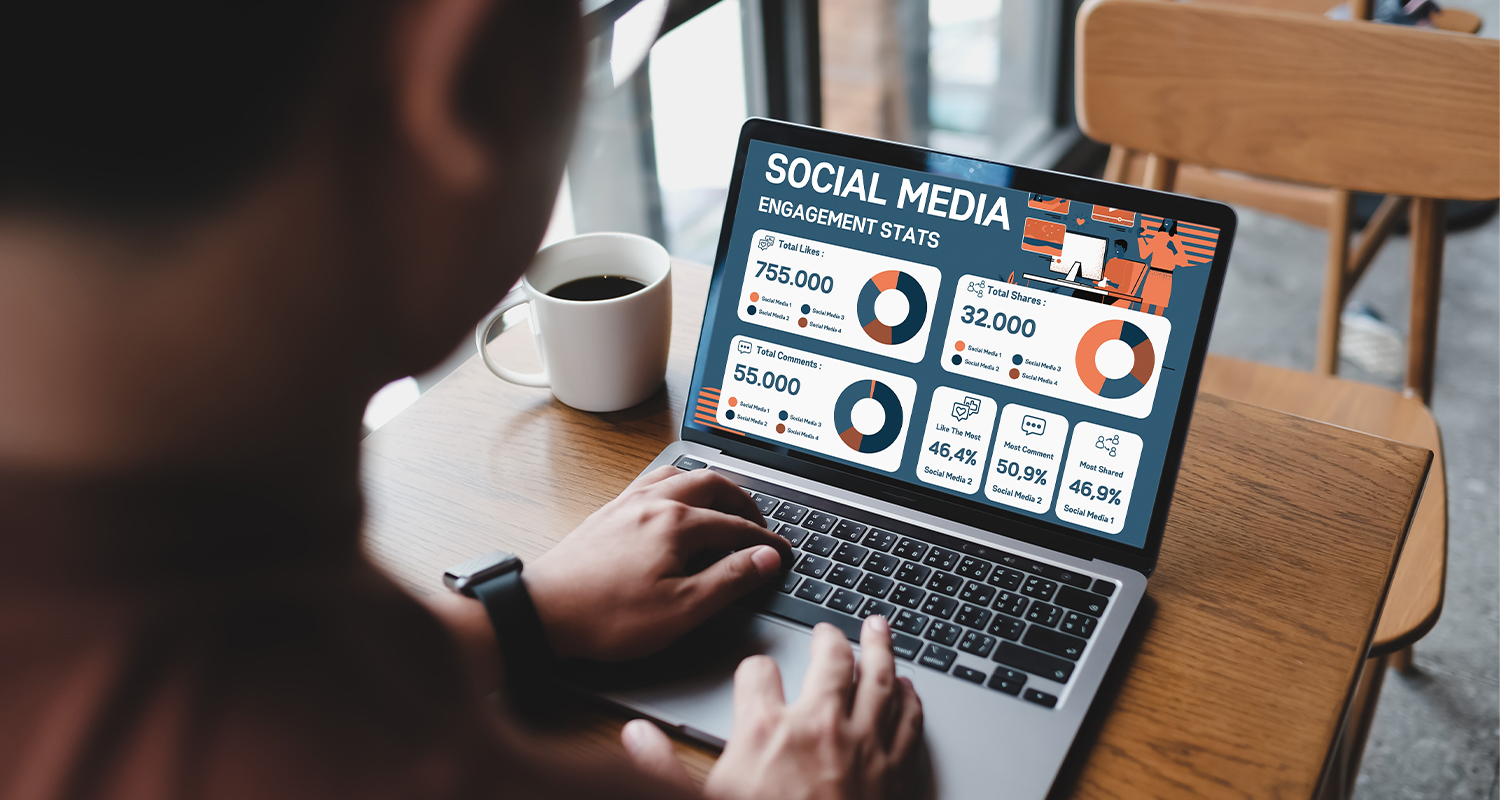

Social Media Metrics 2025
Social networking is undeniably an effective marketing tool. After all, an estimated 5.24 billion people utilize Facebook today. It is critical to engage with your customers and clients through social media. Tracking social media is more than simply stats; it's about understanding what works and optimizing for success.
Social media involvement can reveal a wide range of user behaviors and insights, including what your consumers (and detractors) think about your business. It can reveal a lot about the types of marketing campaigns that are effective and which are too expensive to maintain.
What is Social Media Measurement?

Tracking likes and shares is only the beginning; true social media measurement goes deeper. It is the rigorous tracking, collection, and analysis of data from your social channels to evaluate the effectiveness of your marketing activities. It enables you to make comprehensive selections.
There are two types of social media metrics:
- Ongoing analytics: This continuous monitoring records activity over time. It allows you to keep up with the discourse and vibes surrounding your brand and company. Once configured, you can leave it running and check in on a regular basis.
- Campaign-focused metrics: When conducting a specific campaign with a set start and end date, campaign-focused monitoring allows you to assess the effectiveness of these initiatives. The metrics will differ between campaigns based on your objectives.
Top 10 Must-Know Social Media Performance Metrics
It is not enough to just track social analytics. You must know which ones to monitor in order to improve your brand's success, understand user behavior, and modify your strategy. There are plenty of alternatives available, and the data you receive can be confusing at times. Concentrate on these key performance indicators (KPI).
1. Social Media Engagement

It's easy to become fixated on your follower count, especially if you have a large number. However, engagement is a far more reliable indicator of success. Engagement consists of likes, shares, comments, and overall involvement. High engagement indicates that individuals are interested and often loyal.
2. Reach
Reach refers to the amount of unique users who view your content. In contrast to impressions, which count multiple views per person, reach measures the number of unique individuals that saw your content. Higher reach means your work is seen by a broader audience. That is significant for evaluating your distribution tactics.
3. Social Media Referral Traffic

Do you want to determine if social media is generating genuine business results? Track referral traffic to see how many people come to your website via social media. Platforms such as Facebook, Instagram, LinkedIn, and Bluesky can generate significant traffic. Monitoring referral traffic allows you to evaluate how social initiatives affect website engagement, conversions, and revenue.
4. Share of Voice
Share of Voice (SOV) quantifies how frequently your brand is discussed in conversations relative to competitors. More individuals talking about your brand often results in a stronger market presence. SOV is ideal for tracking brand awareness and competitive positioning.
5. Mentions

Mentions include both direct (tagged) and indirect connections to your brand on social media. Monitoring your mentions can help you assess brand reputation and audience sentiment. High positive mentions frequently imply good brand familiarity, whereas negative mentions highlight areas for improvement. Always monitor mentions for possibilities to surprise and excite people while also improving customer service.
6. Lead generation
Lead generation is excellent, but does it lead to sales? Social media may be a great lead generation tool. Sign-ups, gated content downloads, and direct inquiries on these platforms can help you determine how well your social activities translate into commercial leads.
7. Net Promotor Score (NPS).
.jpg)
Your NPS determines how likely your target audience is to suggest your brand to others, which is an important indicator of consumer loyalty and satisfaction. You'll calculate your NPS by analyzing survey replies and direct feedback. A higher NPS indicates a stronger community of brand champions.
8. Return on Ad Spend (paid ads on social)
ROAS is especially important for businesses implementing paid social promotions. This measure calculates the revenue gained per dollar spent on advertising. A high ROAS typically implies a well-optimized campaign. A poor ROAS may indicate that targeting, creative, or bidding tactics need to be adjusted.
9. Virality Rate
The virality rate indicates how quickly your material spreads---calculated as the percentage of shares compared to reach. Posts that are widely shared indicate that your material is appealing to users. Viral content often has a large organic reach and spreads brand recognition beyond the intended target audience.

For example, a social media post that receives 100 unique views and 20 shares has a 20% virality rate. Your post has received one share for every five unique views.
10. Brand Sentiment
Brand sentiment reflects how consumers truly see your brand---positive, neutral, or negative. AI algorithms can now classify mentions as favorable, neutral, or negative. That allows you to learn how others perceive you and where you may develop.
What is the Process of Social Media Measurement?

Now that you know what to measure, how do you do it? Let's have a look at how you can start doing this. First, discover social media measurement tools that capture these indicators and begin measuring. Some platforms include internal analytics capabilities, while others may require third-party solutions. You may even need to construct your own using APIs.
1. Outline Your Social Media Goals
Assume you're attempting to launch an influencer campaign that mainly relies on video content. In this case, you're unlikely to look at X or Facebook. You might, however, prefer Instagram and TikTok. Make a list of all your business goals. If you're not sure what to target, consider looking at other brands in your category. Competition analysis can assist you in making a decision.
2. Pick relevant Social media KPIs
Not all social media KPIs are equal. Choose indicators that are relevant to your business objectives and provide actionable information. Do you have any queries on how to evaluate a successful social media KPI? They should be:
- Tied to business objectives: It's pointless to measure a metric if it doesn't match your goals. Awareness, increased sales, and greater consumer engagement are all possible solutions.
- Easily measured: Choose KPIs that you can measure over time with tools. "Make it viral" is not a goal in and of itself.
- Actionable: A useful metric is one that can be acted upon. If engagement or referral traffic diminishes, you should have a clear plan for optimizing the strategy.
3. Track Social Media Campaign's Success
Most tools operate in real time. It is considerably easier to acquire necessary data if you can plan ahead of time and set up tracking before the campaign begins (and before the reporting deadline). Track performance by comparing how your campaigns or content perform against the KPIs and targets you set. These KPI benchmarks serve as a roadmap for future initiatives, and sharing insights is essential.
Two key questions to ask for each KPI are:
- How do your numbers compare to your expectations?
- How do they compare to your competitors or similar items and campaigns?
4. Make Changes to Your Social Media Strategy
The last stage in the process is to carefully analyze the social media measurement program.
- How are these metrics performing?
- Are you missing anything?
- Was anything redundant or superfluous?
Consider what you can improve. Make adjustments. Measure more. Check in with your initial goals to ensure that new measurements assist you in achieving them.
Conclusion
In 2025, social media metrics continue to play a critical role in optimizing marketing strategies and understanding customer behavior. By tracking key performance indicators (KPIs), brands can gain valuable insights into engagement, reach, and sentiment, allowing them to refine their campaigns for maximum impact. Social media measurement is not just about collecting data---it's about interpreting it to improve business outcomes. Consistently monitoring these metrics ensures that companies stay competitive, adapt quickly to trends, and enhance customer experiences. As platforms evolve, so should the strategies used to measure and analyze social media performance.
Frequently Asked Questions
Why is social media measurement important?
It helps brands understand user behavior, optimize marketing strategies, and improve ROI.
What is the difference between reach and impressions?
Reach measures, unique users who see your content, while impressions count the total number of times your content is viewed, including multiple views by the same person.
What is the best way to measure social media success?
Focus on KPIs that align with your business goals, such as engagement rate, referral traffic, and conversion rate.
How do I track social media referral traffic?
Use analytics tools to measure how much traffic is directed to your website from social media platforms.
How can I improve my social media metrics?
Regularly track KPIs, adjust your content strategy based on performance data, and ensure your metrics align with your business objectives.

